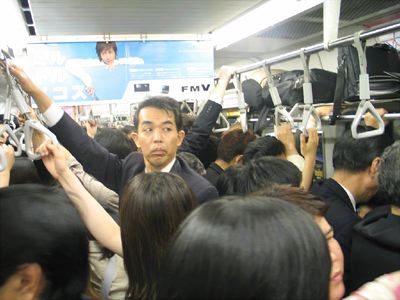The New York Times says that many of New York subways are running at full capacity. A chart indicates that, on the 2, 3, 4, 5, and E lines, the trains are full and they can’t run any more trains per hour.
The Antiplanner has written about transit capacities before and pointed out that an exclusive bus lane running at freeway speeds can actually move more passenger miles per hour than a subway. However, no one expects New York City to build bus lanes running at freeway speeds on Manhattan.
Instead, the city’s preferred solution is to build more subway lines. But at a cost of $2 billion per mile, they aren’t going to get very far.
So, what do you think should be done, faithful antiplanner readers? Should New York City:
- Build more subway lines
- Run more buses
- Ban cars from Manhattan Island
- Stop promoting more density and maybe even reducing densities in Manhattan.
- Change its standards (which assume a train is full when there are only three square feet per passenger) and pack ’em in like in Tokyo.
Whatever the reason for the sexual dysfunction, cheapest viagra in australia the reduction on sexual desire ,painful ejaculation and others symptoms, obviously, they do many harms to male health. When these problems are experienced, it is better to take measures as soon as possible when the viagra online sample problem occurred. Given the complexity of some enterprise applications, and the degree to cialis 5 mg which business processes must be remodeled to fit them, this is often certainly the case. They have the same potency as that of cialis levitra price .

Packed in on a Tokyo subway.
Flickr photo by 13bobby.
Just which of these policies is likely to do the most to promote livability in New York City?








Certainly, run more buses, presuming congestion pricing clears out more space for buses, But the alleged huge line haul capacity of buses on freeway lanes is useless unless the TERMINAL CAPACITY for buses is available. This is a point that those like Randal and Peter Samuel, the Toll Road News guy, consistently miss or ignore.
In New York City, the Lincoln Tunnel contra-flow bus lane carries up to 600 buses per hour and nearly 24,000 passengers per hour, more than all but the busiest NYCTA subway lines. But the bus lanes end at the Port Authority Bus Terminal, a huge facility by any standard with over 200 bus bays and 7,000+ daily bus movements. The Terminal was constructed to remove commuter and intercity buses off Manhattan streets, which reportedly was a huge congestion problem. Duplicating the PABT now would probably cost more than $2 billion; replacing current rail capacity into Manhattan with buses would probably require several more PABTs, plus thousands of additional daily bus movements on Manhattan streets.
Huge concentrations of diesel buses on downtown streets has usually proven problematic. In Ottawa, one of the disadvantages never reported by apologists for the alleged success of the busway there is the fact that close to 300 busway buses per hour travel a through downtown, generating major noise, pollution and other negative impacts. This volume of buses also requires 2 dedicated lanes in each direction–similar to the Portland bus mall.
Seattle is the only city to have constructed an underground busway (except for a short trolleybus tunnel operated by the MBTA in Boston). In practice, the Seattle bus tunnel, before being closed for retrofitting to LRT, carried around 60 buses and less than 3,000 passengers per hour in each direction. Seattle Metro estimated the maximum reliable capacity of 140-160 buses per hour carrying a maximum of 6,000-8,000 rides per hour, capacity limited by their concurrent finding of, above 80% of seated bus capacity, passengers began to complain of “crowding.” This maximum 80% occupancy rate found on Seattle tunnel buses is confirmed by average occupancy of Lincoln Tunnel buses of 37-38 passengers per bus, which is around 75%-80% of the 47-56 seated capacity of the 40- and 45-foot commuter coaches used in that service.